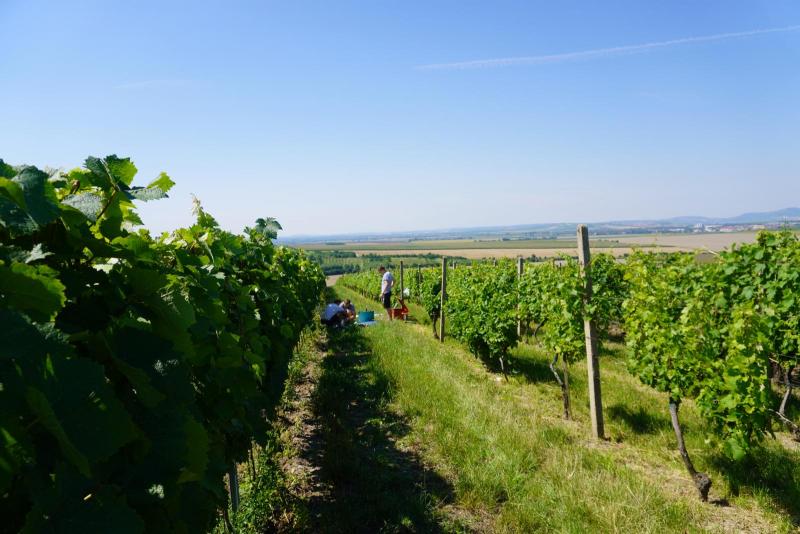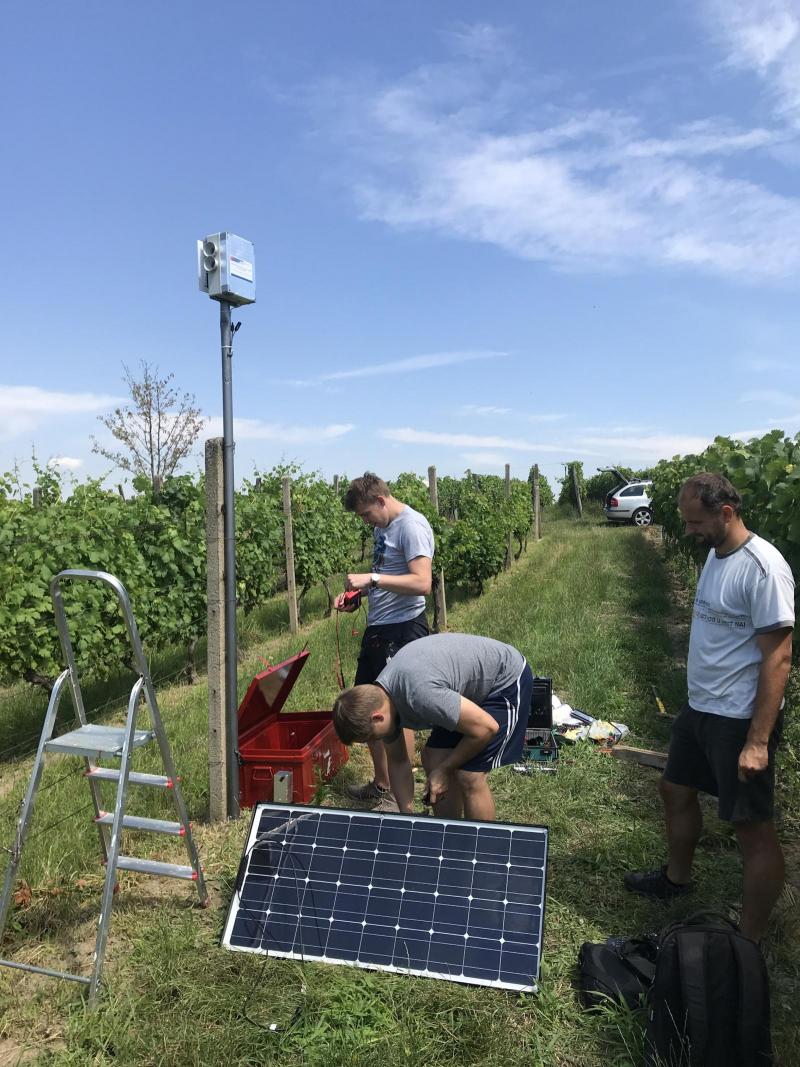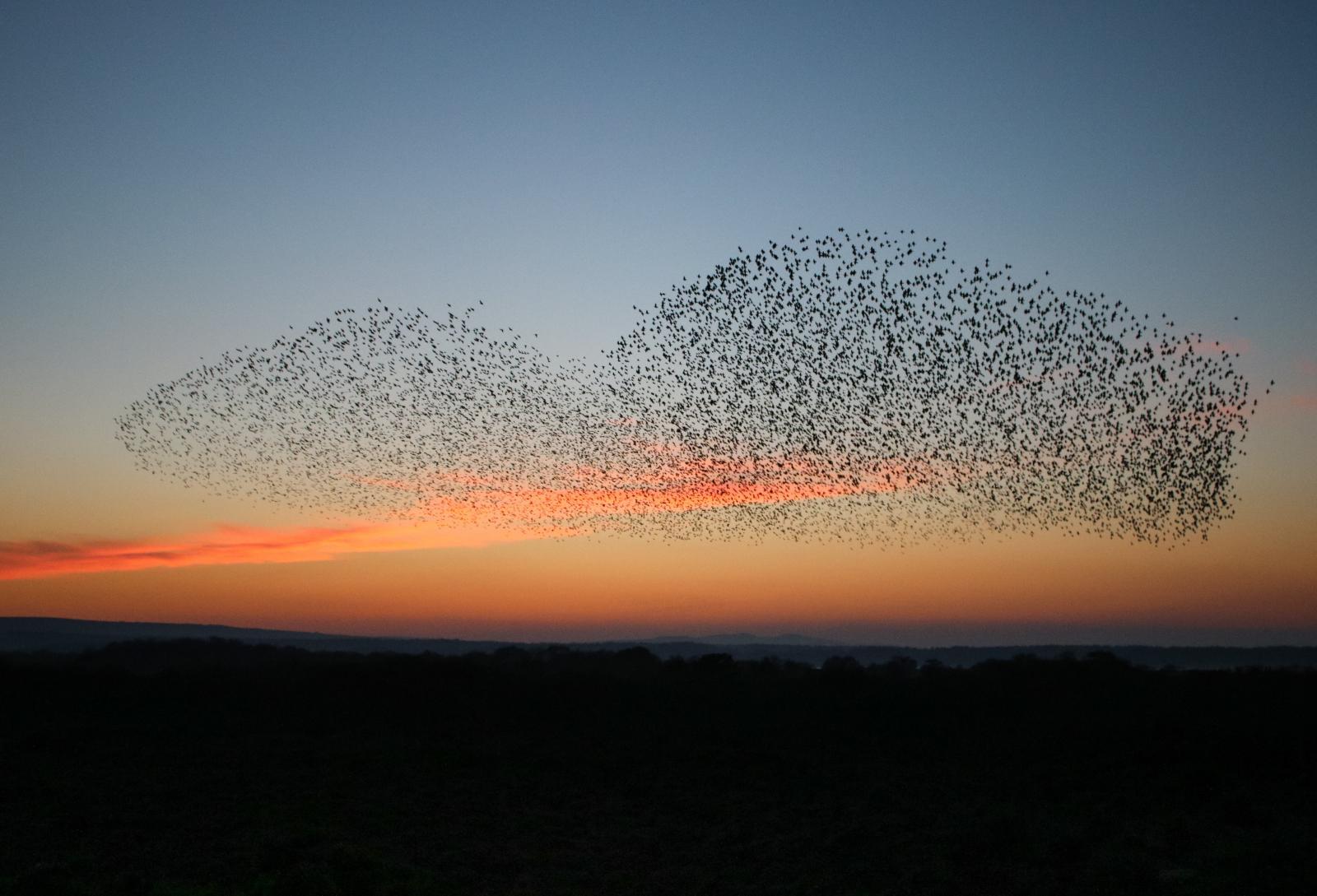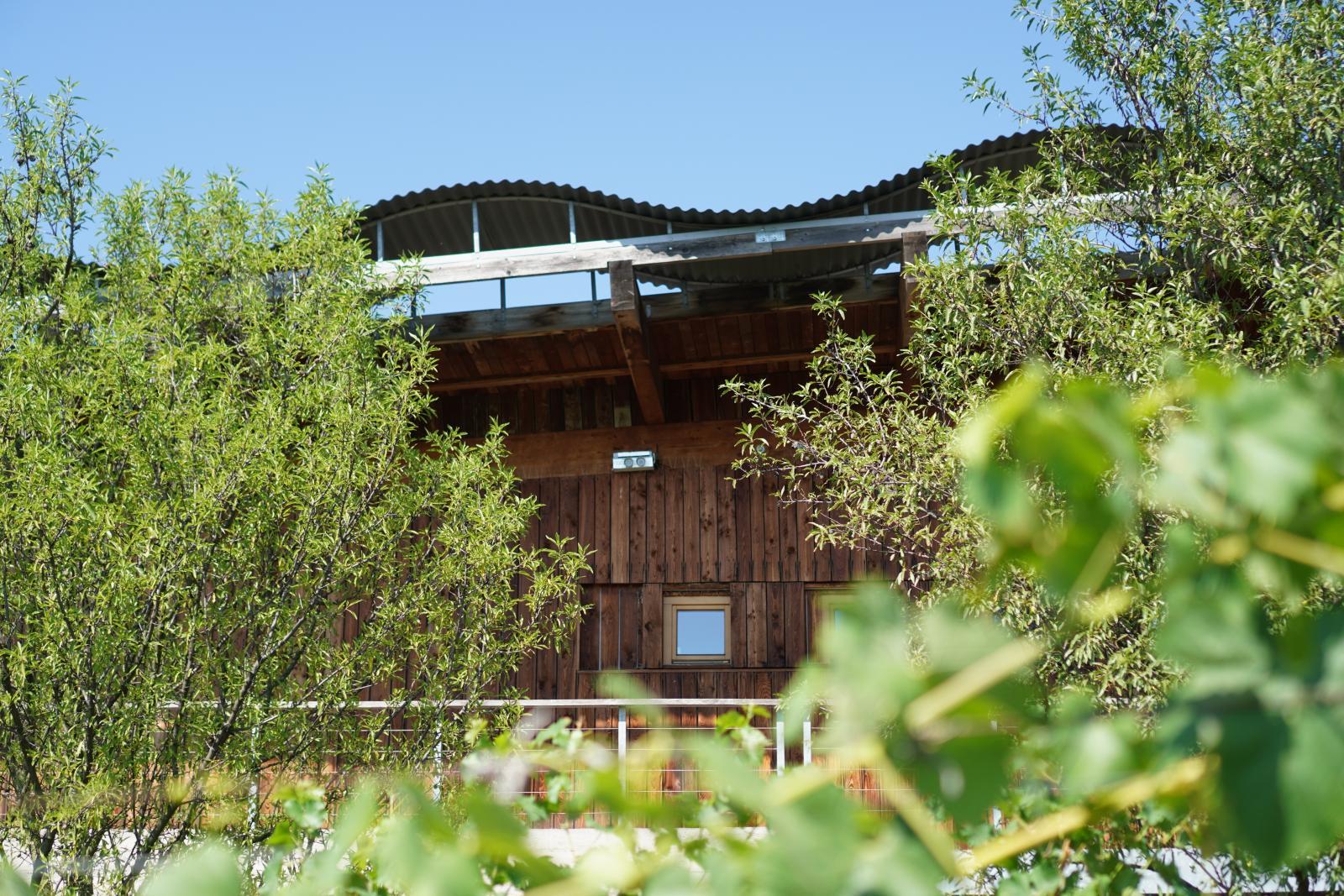Ideas and discoveries
Starling are a winemaker’s nightmare. Electrical engineers form BUT come to aid

The slopes of South Moravia are bathed in warm sunshine, the vineyards are covered with sweet fruit and everyone is looking forward to tasting what they have managed to grow. Suddenly, a growing black cloud appears in the sky. Thousands of starlings descend among the vines and most of the crop is gone in just ten minutes. Huge damage could be prevented by an intelligent scare system, which is being developed by experts at BUT. And winemakers are interested from as far as France.

SIGHTS ON THE FLOCK
If you have ever driven through a vineyard during the ripening season, you have certainly heard the cannon-like thuds. And it really is a cannon – a gas cannon, which is supposed to scare, at regular intervals, any birds which might be tempted to eat the ripe grapes. However, such cannons scare other animals, annoy the locals who have to listen to them all day, and above all, the starlings can get used to them and they become meaningless.
“We decided to scare the flock of starlings only when they appear over the vineyard. When a flock appears on the camera, the artificial intelligence evaluates that the birds have arrived, the optical detector sends a signal to the “scarer” and it is triggered,” researcher Petr Marcoň explains the principle of the new system.

STARLING VERSUS AIRPLANE
And how can the camera detect that starlings have arrived? “We are scanning the space of the vineyard and the sky above it. The cameras work on pre-trained models, where we showed flocks of starlings to the AI,” Janoušek explains the principle of detection. The AI also ensures that the system does not evaluate large predators, distant aircraft or mosquitoes too close to the camera as potential threats.
Some flocks are said to land tens of metres in front of the vineyard, escape the viewfinder and simply hop to the spot.
The computer that evaluates the data is part of the cameras. The entire system is remotely accessible; it can be powered by a solar panel with battery or plugged in. Despite the fact that an initial investment would be necessary, experts from BUT believe that the winemakers would make their money back quite quickly. For example, smaller winegrowers can purchase the system together and monitor entire slopes at once.

Because starling raids happen only a few times a day, it is not necessary to have the cannons running all day. If the system is triggered at the right moment, it can scare the birds away so that they will not appear again at least for that day.
Do you want proof that starlings are not to be underestimated? “Some winemakers cover their vineyards with netting to keep the birds out. But the starlings are capable of landing and then getting under the net. Some flocks are said to land tens of metres in front of the vineyard, escape the viewfinder and simply hop to the spot. That way they would bypass even our system,” says Eliška Vlachová Hutová.
A commercial company has already expressed interest in the system and would like to manufacture and sell it. Our scientists have also been approached by interested parties from France who would like to deploy the cameras in Burgundy.
(tk)
Since he was a child, he dreamed of space. Now he wants to put the first student satellite into orbit
A student from BUT founds OMG Robotics and changes the way computer science is taught in Czech schools
Scientists from FEEC BUT are participating in the development of a smart intersection. This could make transport more efficient and ensure greater safety
High school students visit BUT to experience the cyber arena
Martin Cígler: The biggest obstacle to faster a development of it is the lack of people